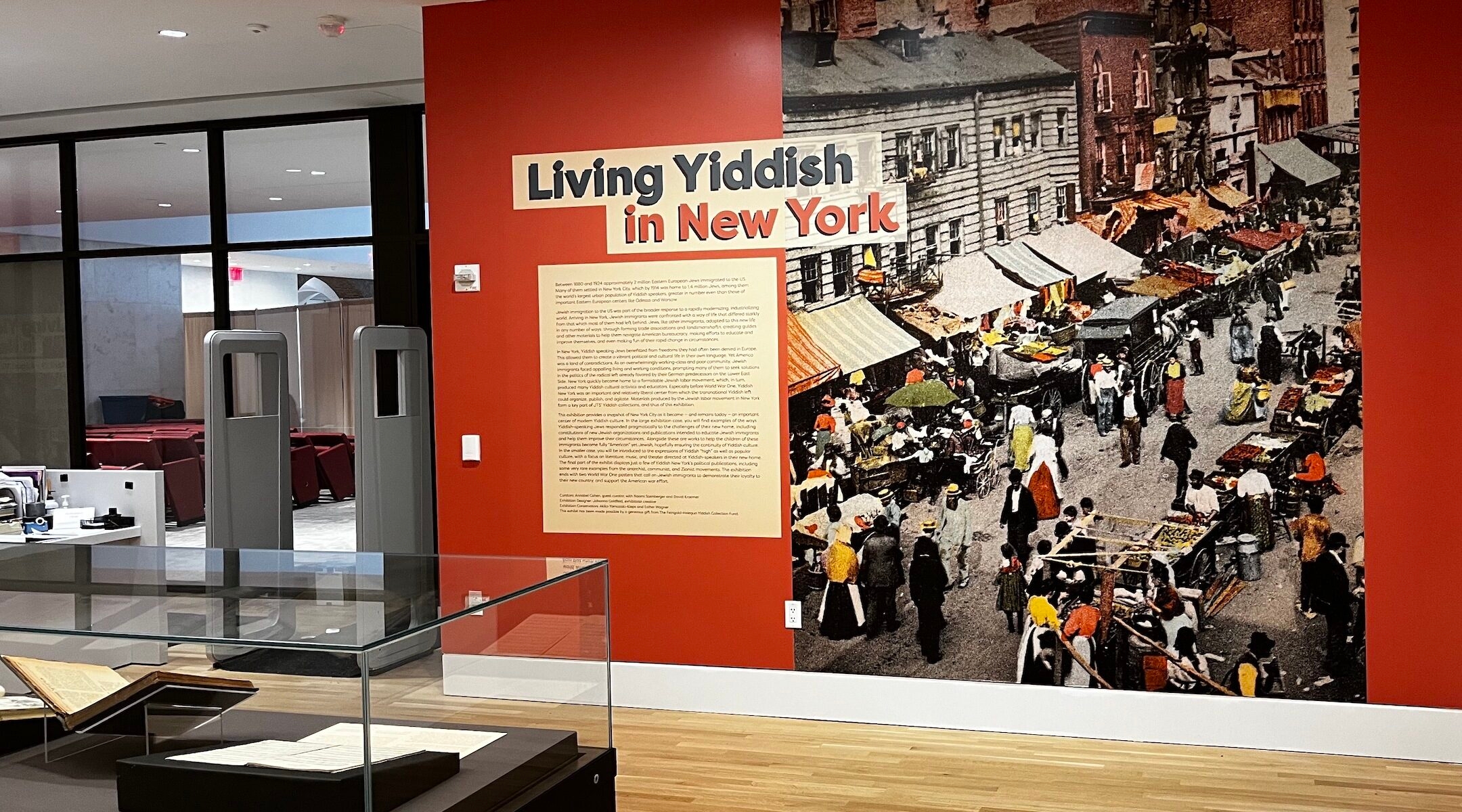(New York Jewish Week) — New York City has no shortage of collections preserving the Yiddish culture that flourished here in the late 19th and early 20th centuries. There are Yiddish theater collections at the New York Public Library and the Museum of the City of New York. Columbia University has extensive Yiddish holdings.
And then there is the granddaddy (or should we say zayde) of them all, the archives of the YIVO Institute for Jewish Research, the largest collection of Yiddish-language works in the world.
The Jewish Theological Seminary, meanwhile, is better known for its vast holdings of Hebrew manuscripts and books, Jewish marriage contracts, rare maps, legal documents and other Judaica.
A new exhibit, however, is drawing attention to some of the Yiddish treasures in the JTS library, especially those reflecting the political and cultural ferment of the 2 million Eastern European Jews who arrived and thrived in New York between 1880 and 1924.
“It’s about the lives of Yiddish speakers and the legacy that lives beyond them,” said David Kraemer, librarian and professor of Talmud and Rabbinics at JTS, referring to the title of the exhibit: “Living Yiddish in New York.” He curated the exhibit along with guest curator Annabel Cohen, a PhD student in Modern Jewish History at the seminary, and Naomi Steinberger, director of Library Services at JTS.
The exhibit, whose scope ends before the Holocaust and the post-war boom in Yiddish among the city’s Hasidic Jews, opens April 20 and runs through August 10.
Kraemer gave us a tour of the exhibit this week; here’s a look at seven standout items and what they say about New Yorkers who lived and dreamed in Yiddish.
The allure of America
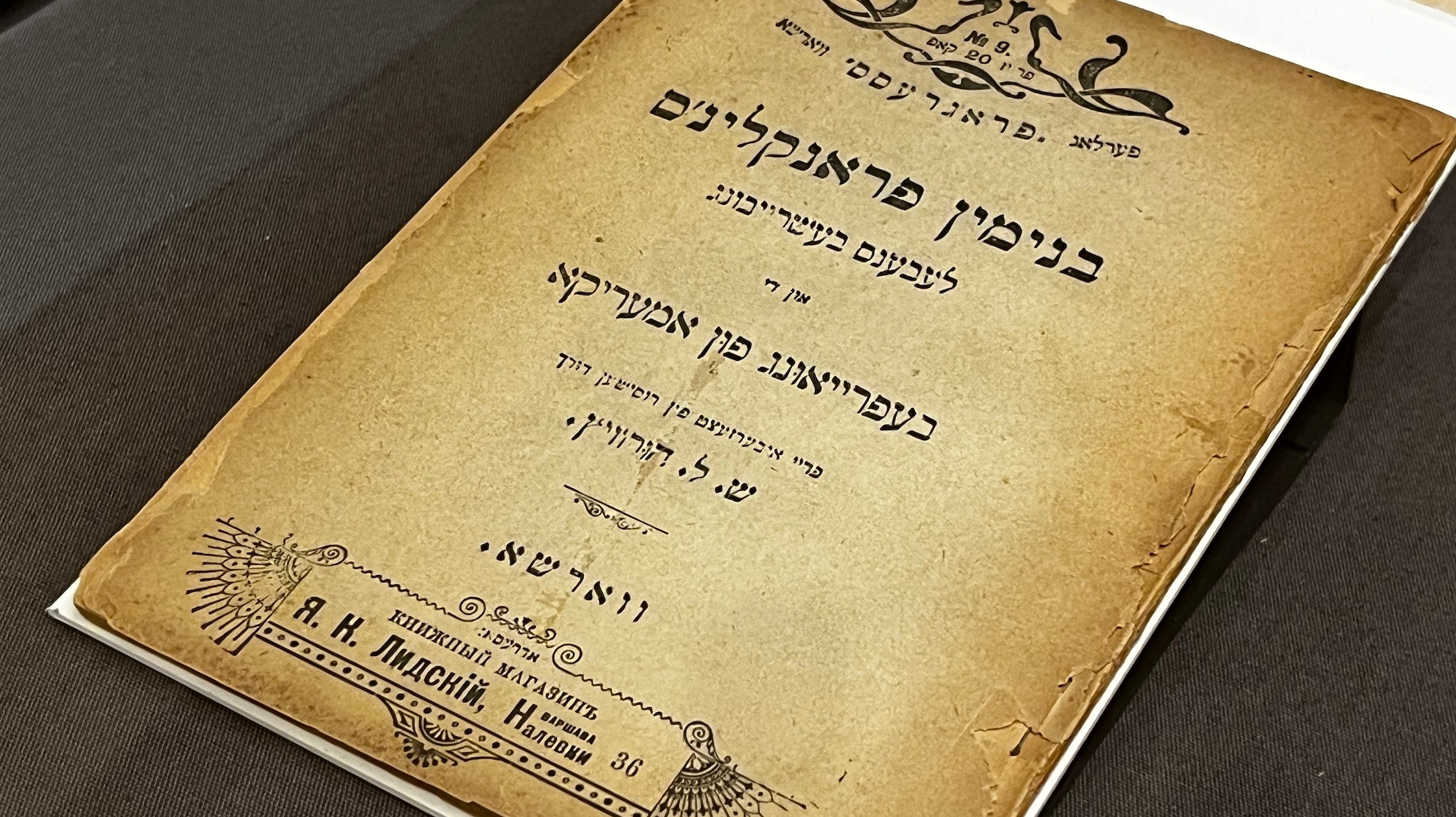
Sh. L. Hurvits (trans.) “Binyamin Franklins lebns bashraybung un di bafrayung fun amerike” (Benjamin Franklin’s life and the liberation of America). Warsaw, 1901. (JTSA)
A Yiddish-language biography of Benjamin Franklin, printed in Warsaw in 1901, is the only item in the exhibit that was created overseas. “The Yiddish-speaking communities of Eastern Europe imagined America as ‘di goldene medine’ — the golden land. It held for them a promise and part of the promise emerged from the fact that they knew something about American founding principles,” said Kraemer. Right next to the Franklin biography is an anonymous poem gently mocking that notion as dreams gave way to reality.
Becoming Americans
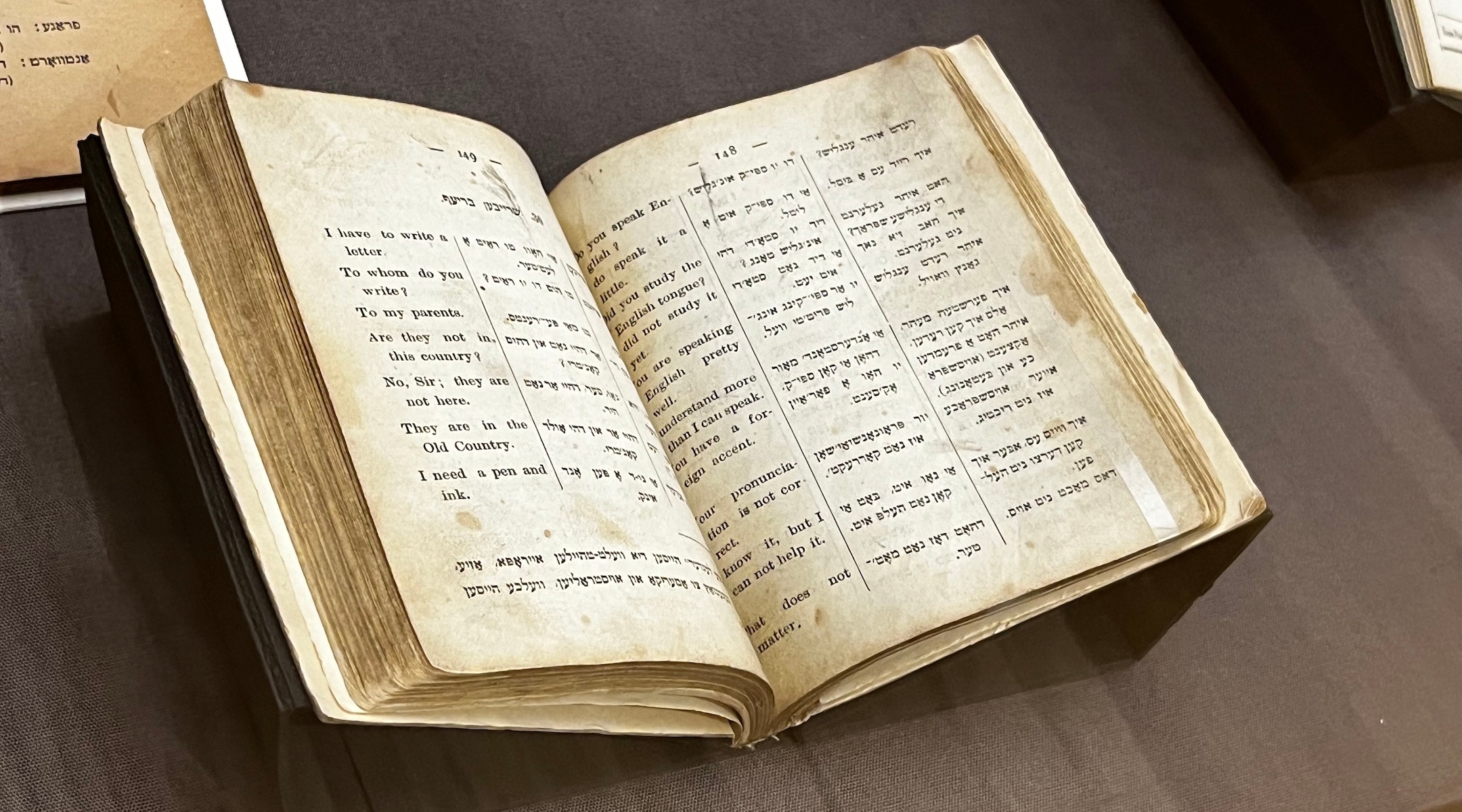
Alexander Harkavy, “Der Amerikanisher lerer” (The American teacher of the English language and American institutions). New York: J. Katzenelenbogen, 1897. (JTSA)
The linguist and philanthropist Alexander Harkavy, himself a Russian-Jewish immigrant, created a series of educational guides to help Jewish immigrants acclimate in their new homes, including this Yiddish-English phrasebook in 1897. The Workmen’s Circle, meanwhile, created a vegetarian cookbook for immigrants in 1926, part of a wide effort connecting healthy eating with progressive politics.
Old World meets New
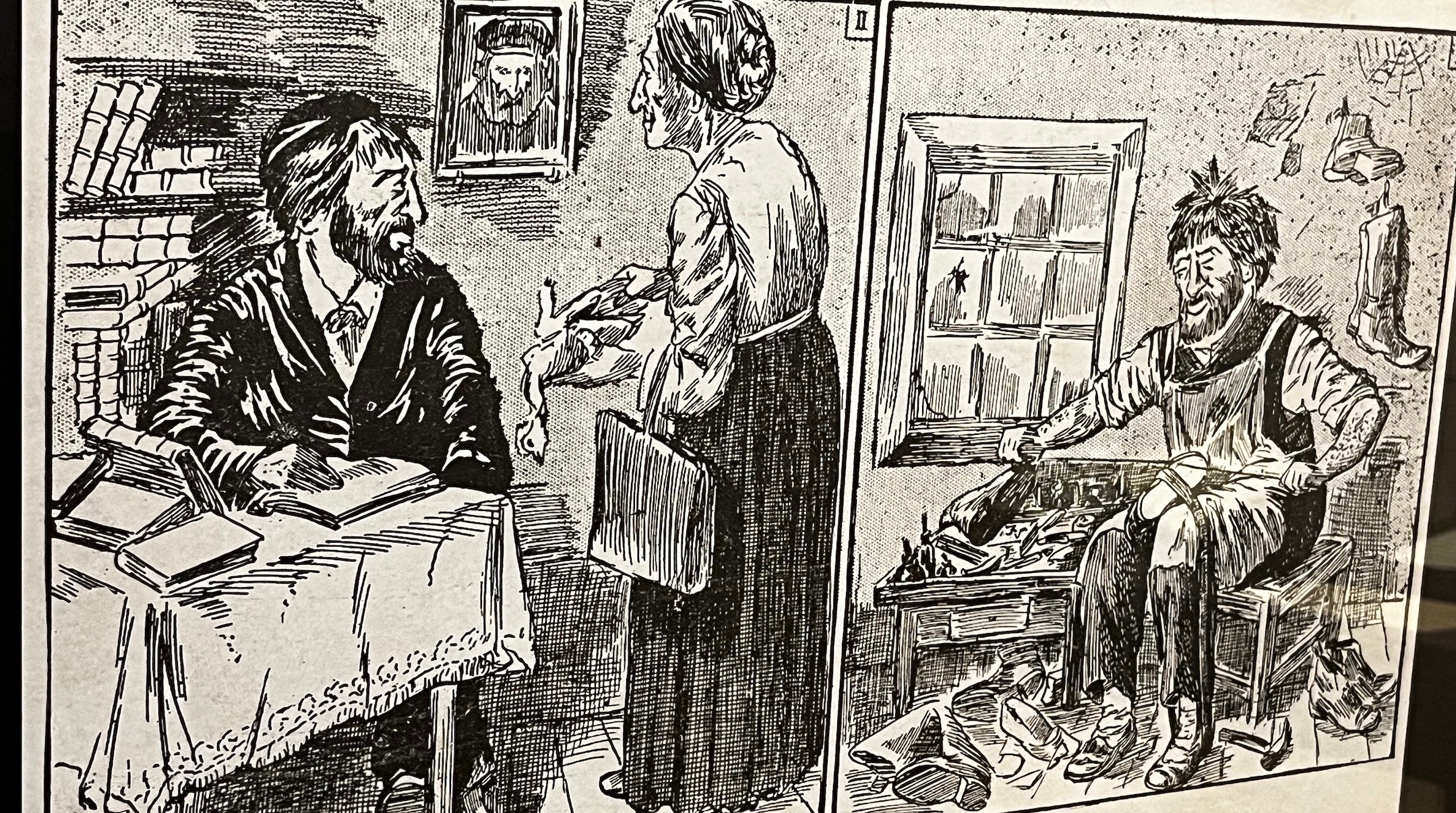
Postcard: “In der heym iz er geven a shuster, in nyu york paskent er shale” (At home he was a cobbler, in New York he’s an expert in Jewish law). New York: Der groyse kundes. (JTSA)
The exhibit includes blown-up images taken from postcards in the JTS collection suggesting the changes ahead for new immigrants. In one cartoon, created in 1908, an immigrant who was a respected rabbi back in Europe is reduced to peddling in the United States. In the image above, however, the joke is reversed: “At home he was a cobbler, in New York he’s an expert in Jewish law.” In a religious desert like America, the cartoon suggests, even an average Jewish education makes you a sage.
That’s entertainment!
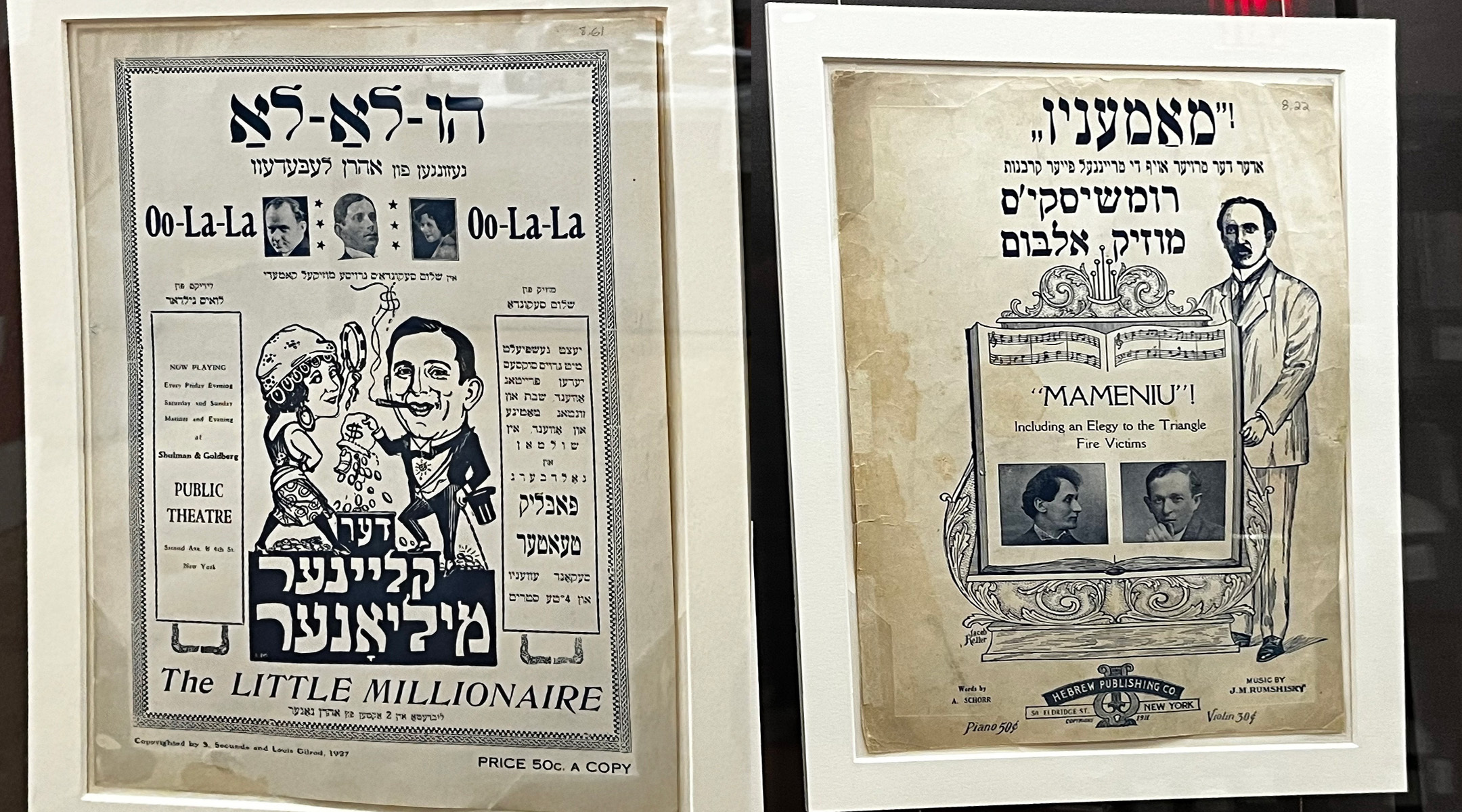
Left: Sheet music for “Der kleyner milioner” (The little millionaire), undated. New York: Trio Press Inc. Right: Sheet music for “Mamenyu,” or “Mother Dear,” mourning the Triangle Shirtwaist Factory fire victims. New York: Hebrew Publishing Co., 1911. (JTSA)
“The Yiddish theater culture in New York was extraordinary,” said Kraemer. At its height, the “Yiddish Rialto” – the theater district located primarily on Manhattan’s Second Avenue, but extending to Avenue B, between Houston Street and East 14th Street in the East Village — could boast as many as 30 performances a night. The exhibit includes sheet music for popular songs, from a ditty about “The Little Millionaire” to a song composed in mourning for the victims of the Triangle Shirtwaist Factory fire, which caused the deaths of 146 garment workers in 1911.
Getting organized
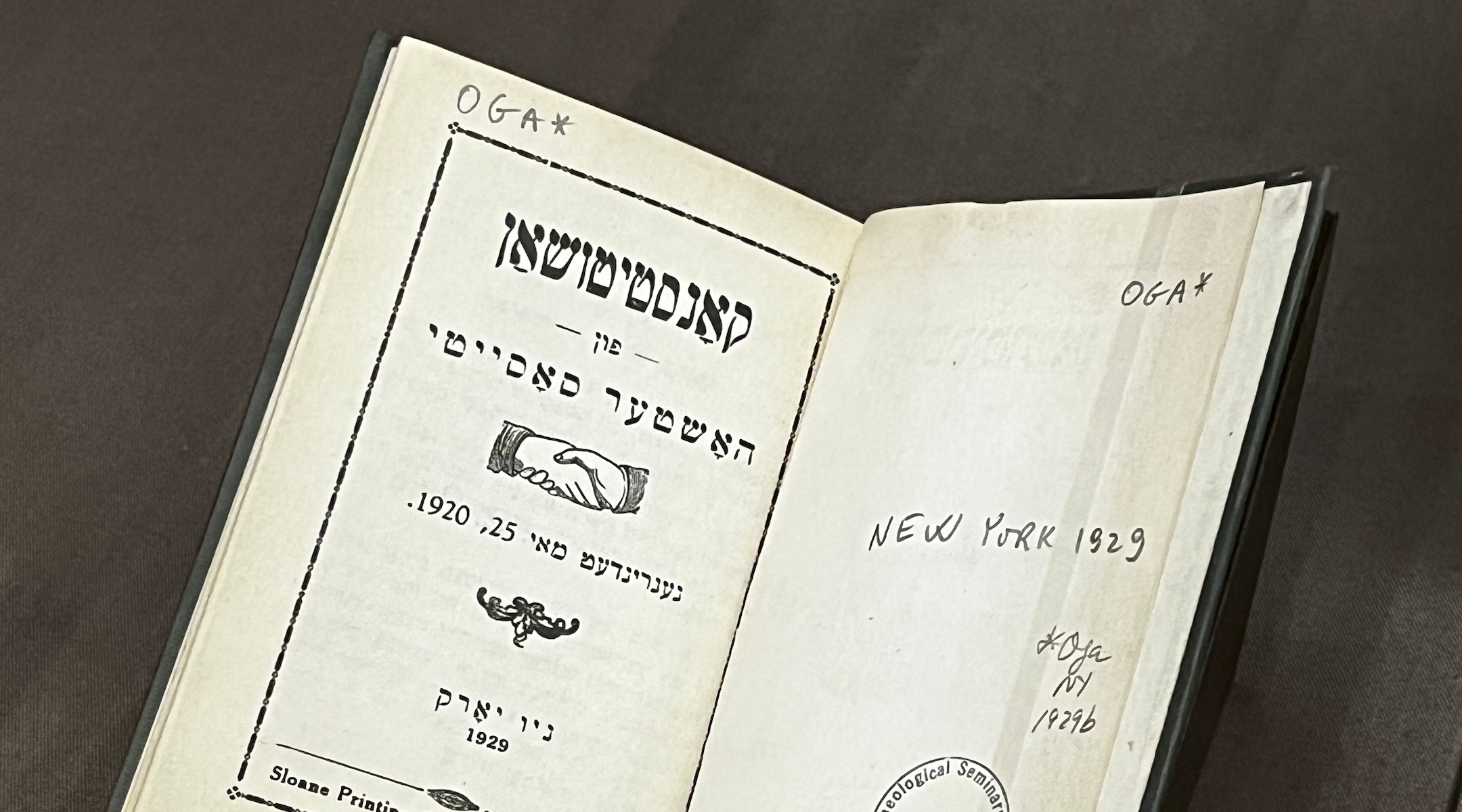
“Konstitushon fun Hoshter Sosayti” (Constitution of the Hoshter Society). New York. Sloane Print Co., 1929. (JTSA)
Immigrants organized a huge network of mutual aid societies, affinity clubs for Jews from the same towns in Europe (landsmanschaften) and political clubs. Jews from Hoshcha in Ukraine organized a “Hoshter Society” and wrote up this “constitution” for members. “They learned from the American model: you create an organization, you write a constitution,” said Kraemer.
Getting radical
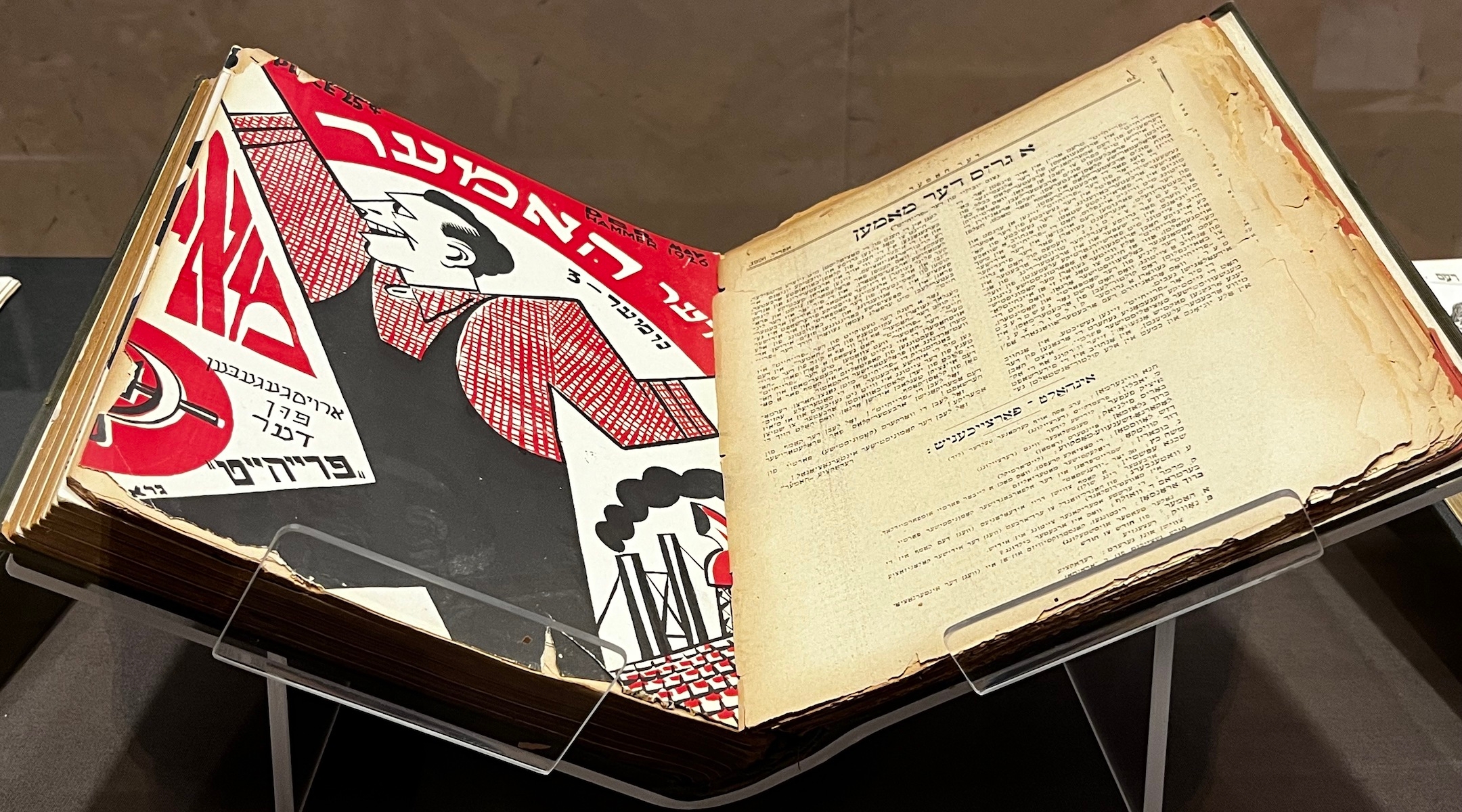
Der hamer (The Hammer). New York: Freiheit, May 1926. (JTSA)
A number of items in the exhibit demonstrate the leftist politics of many of the Yiddish-speaking immigrants. “This reflects the worlds that they came from, where these same ideas were obviously fermenting very powerfully at the time,” said Kraemer. “It also reflects the composition of the community. Many of them were very, very impoverished and living under difficult conditions. And as workers living in impoverished conditions, they were attracted to socialism, even to communism.” “The Hammer,” above, published in May 1926, was the monthly magazine of the communist daily Di Morgn Freiheit.
Teach your children
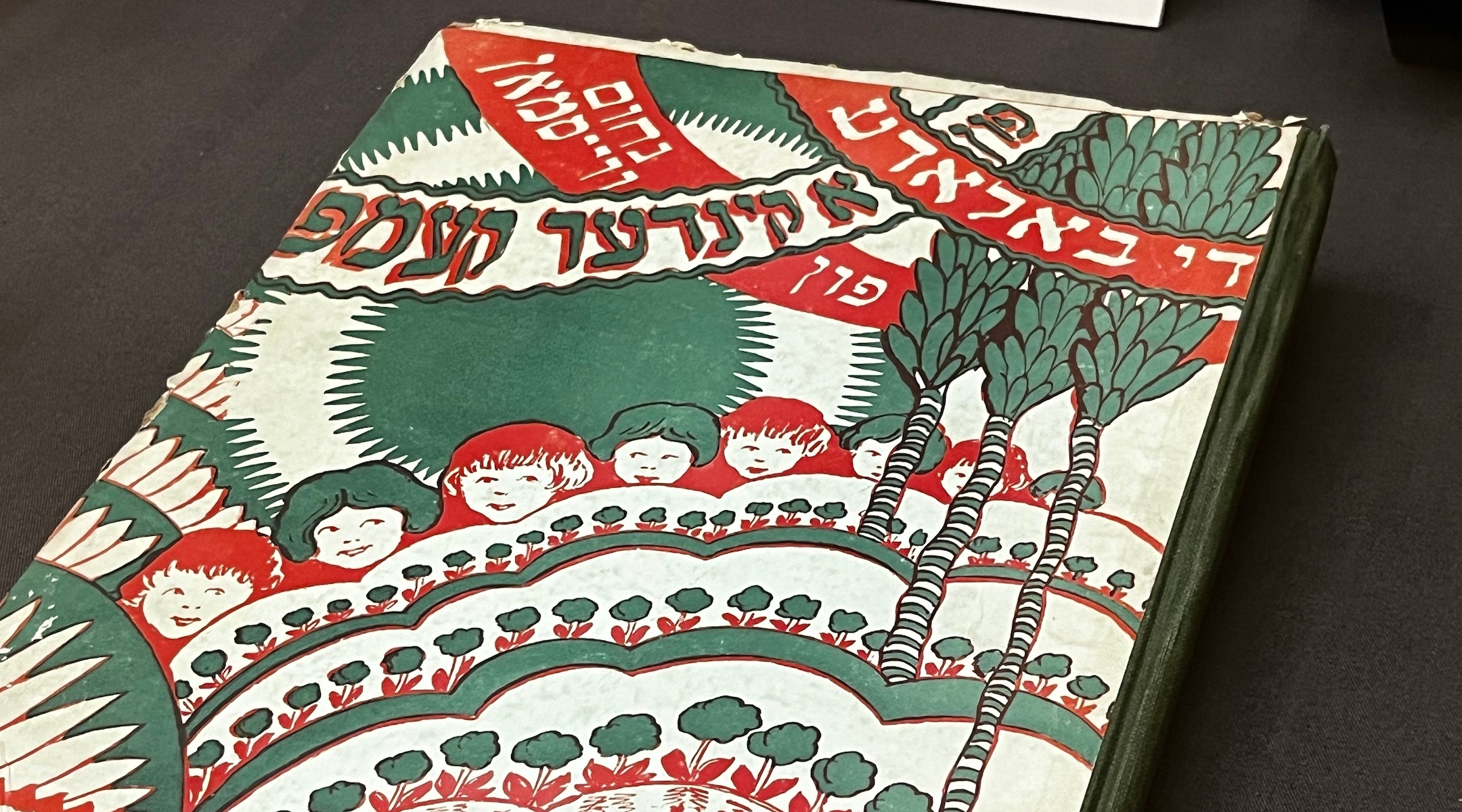
Nokhem Vaysman, “Di balade fun undzer kemp” (The Ballad of our Camp). New York: Union Square Press Inc., c. 1926. (JTSA)
Even as parents were succeeding in assimilating, many didn’t want their Americanized children to forget Yiddish language and culture. Yiddish publishers and educators responded with publications, Yiddish schools, camps and resources, like this children’s songbook created in 1926 for Jewish campers by a teacher at the Workmen’s Circle and the International Workers’ Order Yiddish schools.
“Living Yiddish in New York” runs April 20–Aug. 10 at the Library of the Jewish Theological Seminary, 3080 Broadway. Register here for guided exhibit tours being held in May, June and July.
The New York Jewish Week brings you the stories behind the headlines, keeping you connected to Jewish life in New York. Help sustain the reporting you trust by donating today.
